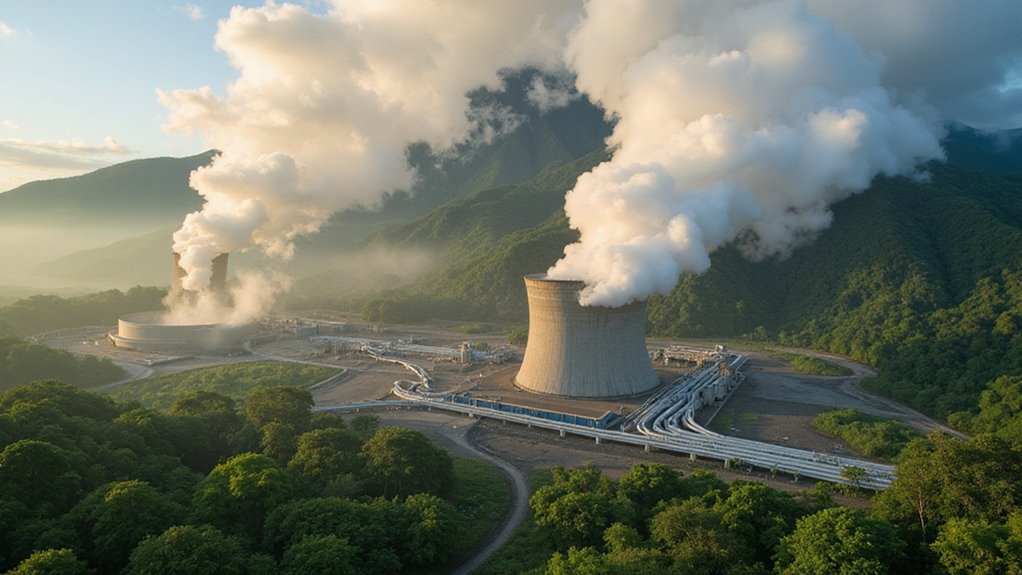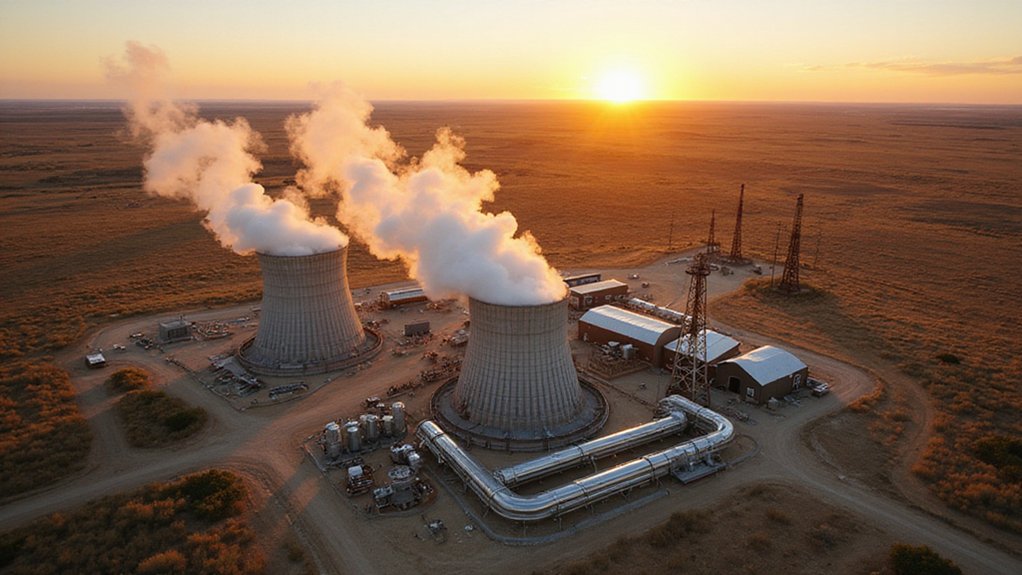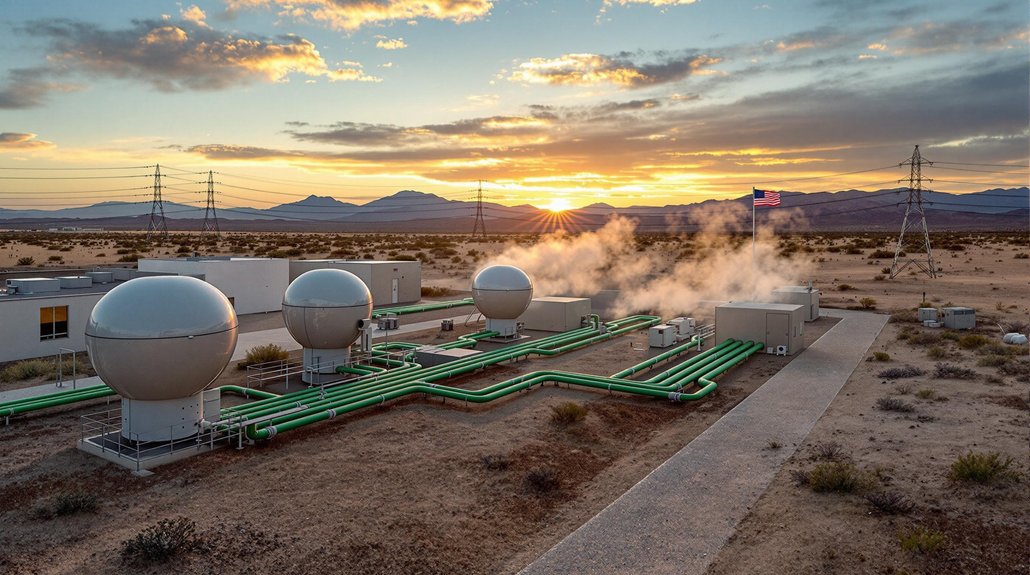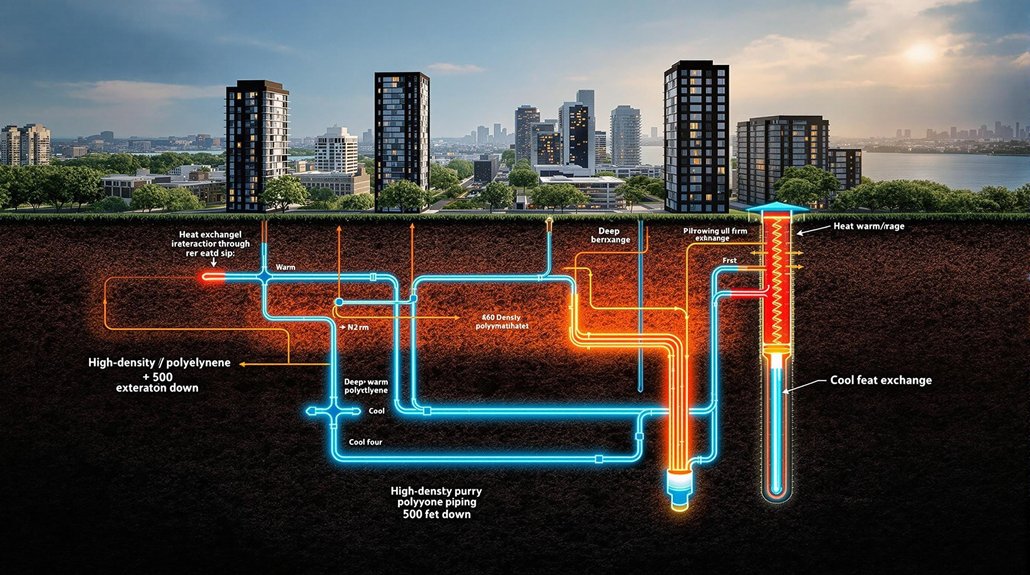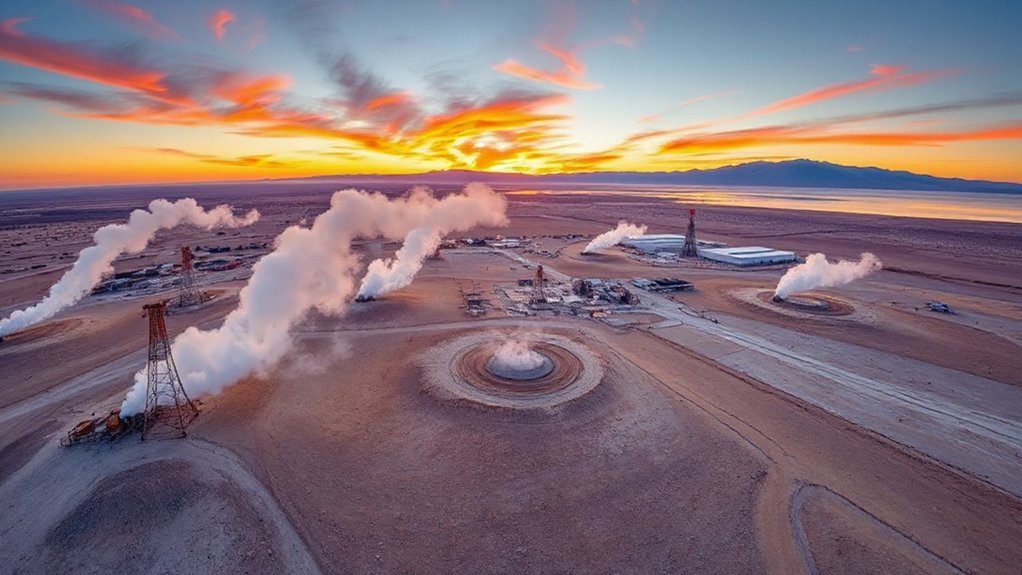While the rest of the world scrambles for clean energy solutions, Indonesia sits on a volcanic goldmine that could power millions of homes. The country holds 40% of the world’s geothermal reserves. That’s not a typo. Nearly half the planet’s underground heat sits beneath Indonesian soil, waiting to be tapped.
The numbers tell a story of missed opportunities. Indonesia’s installed geothermal capacity hit 2,356 MW by the end of 2022, making it second globally after the United States. Impressive? Not really. That represents less than 3% of the country’s total electricity generation. The potential reaches 23,965.5 MW across 357 locations. Do the math. They’re using about 10% of what’s available.
Indonesia uses just 10% of its massive geothermal potential despite holding 40% of global reserves.
Indonesia set ambitious targets. By 2025, they wanted 9,000 MW of geothermal power to become the world’s leading producer. Reality check: current projections show them hitting 7 GW by 2030, five years behind schedule. Growth has been plodding along at 200-300 MW per year when they need 500-600 MW annually to meet targets. At this rate, they’ll reach their goals sometime around when flying cars become mainstream.
The planning looks good on paper. There are 168 high-temperature projects planned, totaling 6,896.5 MW. Another 52 medium-temperature projects add 1,157 MW. Short-term plans include 48 projects by 2024. Medium-term? Another 126 projects. But planning and doing are different beasts entirely. The country already operates 16 power plants with capacities ranging from 2.5 MW to 377 MW, primarily concentrated in Java and Sumatra.
One success story shows what’s possible. An initial 30 MW facility expanded over three decades to 235 MW, now powering 260,000 houses and cutting 1.2 million tonnes of CO2 annually. That’s real impact. Yet it took thirty years. Indonesia doesn’t have that luxury anymore. Despite these successes, fossil fuels still dominate the energy mix at 85%, while renewables barely scrape 13-15%. With an availability factor of 95%, geothermal energy would provide Indonesia with consistent power generation unaffected by weather conditions, unlike other renewable alternatives.
The challenges are obvious. Geothermal development requires massive upfront costs and comes with significant risk. Many potential sites sit in remote, difficult terrain. But here’s the thing: Indonesia holds the keys to a clean energy transformation. They have the resources. They have the technology. They have the plans. What they need is the execution speed to match their ambitions. The volcanic goldmine won’t tap itself.
References
- https://www.thinkgeoenergy.com/wp-content/uploads/2021/05/Indonesia-short.pdf
- https://new.abb.com/news/detail/126257/harnessing-geothermal-energy-to-power-indonesias-renewable-future
- https://energytracker.asia/geothermal-energy-indonesia/
- https://en.wikipedia.org/wiki/Geothermal_power_in_Indonesia
- https://eavor.com/blog/geothermal-and-indonesias-energy-transition/
